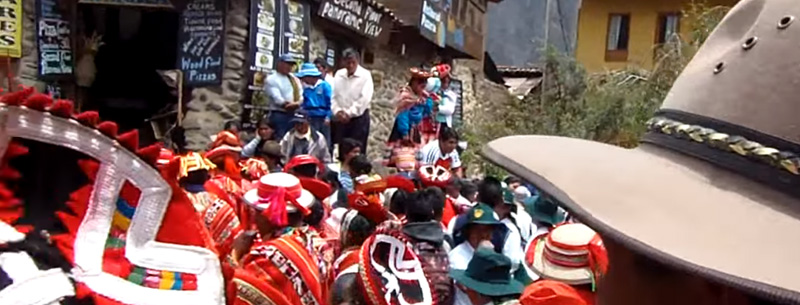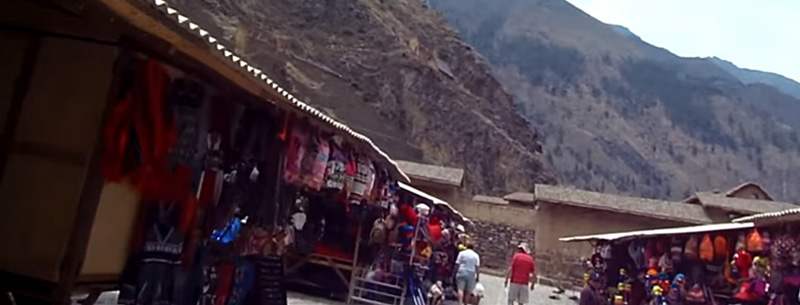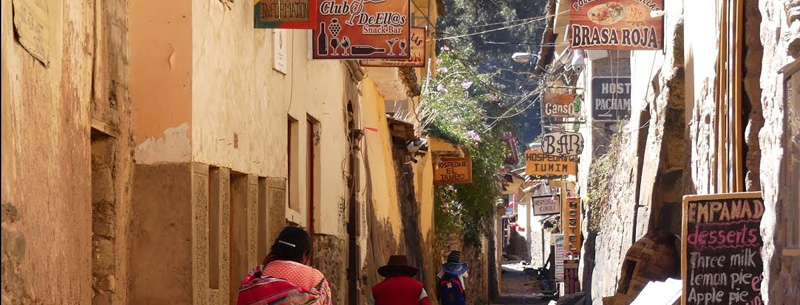Ollantaytambo Peru Travel Guide
Ollantaytambo is a city in southern Peru, located in the district of Ollantaytambo, province of Urubamba. It’s approximately 60 km to the northwest of the city of Cusco. Ollantaytambo is a typical city of Incan origin, and it is located at 76 km of Cusco by road (Chinchero-Urubamba). It’s located at a height of 2,700 m.a.s.l. Both the design and the foundations of most of its constructions correspond to the Incan times. Ollantaytambo was a strategic military, religious and agricultural center.

This is where the Incas retreated after the Spanish took Cuzco. Much of the town is laid out in the same way as it was in Inca times.
Actually, the courtyards and buildings as well as the narrow lanes have their original form. The straight, narrow streets today form fifteen square blocks, or canchas, which contain one entrance to a central quadrangle which is surrounded by houses.
The town of Ollantaytambo is a natural scenario located in the Sacred Valley of the Incas. Until some years ago Ollantaytambo was seen as a passing point in the route of the Sacred Valley of the Incas, subtracting its importance that had in the Inca’s times and forgetting its legacy. Ollantaytambo is a modern city with all the services that the visitor needs, for that reason, a group of managers that has felt the necessity to offer a service of quality and security to all visitors, has implemented this portal like a reference point for what Ollantaytambo offers.
The city of Ollantaytambo
The town of Ollantaytambo is thought to be the only remaining example of pre-Columbian urban planning. Located in the province of Urubamba, Cusco Region
Ollantaytambo is a hillside overlooking the city is a monumental Incan complex.

Ollantaytambo was in fact a tambo, or inn for the Inca or his nobles while traveling on official business, and was strategically located to dominate the Sacred Valley of the Incas. Previously was here where Manco Inca retreated to in order to amass his armies after the fall of Empire Cusco.
Ollantaytambo have around population 2,000, is the most beautiful town in the Sacred Valley. Ollantaytambo is set higher up from the main highway and built on uneven ground. Stone stairways are beautifully framed by stone arches.
The town is also well set up for visitors, with many restaurants and outdoor patios. Normally to Travellers and tourists, it is easy to spend a day or more here, with a half-day spent touring the ruins and the rest of the day spent exploring the city and soaking up the atmosphere.
The town is one of only two places in the Sacred Valley to catch the train to Aguas Calientes at the base of Machu Picchu. While most people take the train from Cusco directly to Aguas Calientes, it is a shorter and less expensive train ride from Ollantaytambo.
Best of Ollantaytambo
The village of Ollantaytambo is the best surviving example of Inca city planning.
Best of Ollantaytambo without a doubt some are the ruins is one of the archaeological centers very conserved, nowadays the ruins just as in the time of the Inca can even be seen.
The city has been built on top of original Inca foundations and is the best surviving example of Inca town planning. The town is divided in canchas which are almost entirely intact. Each cancha has only one entrance (usually a huge stone doorway) which leads into a central courtyard. The houses surround the courtyard. Good examples of this construction can be found behind the main plaza.
Ollantaytambo is located at the foot of some spectacular Inca ruins, which protected the strategic entrance to the lower Urubamba Valley. The temple area is at the top of steep terracing which helped to provide excellent defenses. The stone used for these buildings was brought from a quarry high up on the opposite side of the Urubamba river – an incredible feat involving the efforts of thousands of workers. The complex was still under construction at the time of the conquest and was never completed.
Ollantaytambo History
Formerly according to the Aymara language, Ollantaytambo derives from the word ulla-nta-wi (place to look downwards). For the Quechua language, the name derives from the word Ollanta (which is the name of an Incan Captain whose story is known through literature) and the word tambo, a Spanish derivation of the Quechua word tampu; which means a city that offers lodging, food, and comfort to travelers.
Testimonies of Ollantaytambo inhabitants say that the inhabitants refused to pay the taxes imposed by Inca Pachacútec, and this is why they were murdered with impunity.

When Pachacútec have got the victory claimed the territory as his and ordered the construction of the magnificent buildings that, even today, the city flaunts.
To this end, he used the manual labor of Collao, an area near the Titicaca Lake and Tiahuanaco. The children of Chuchi Cápac, defeated Collao general, had to work as the fortress builders, but they did not wait too long to rebel and run away. Finally, after many confrontations and great bloodshed, the Inca Pachacútec got to control the violent rebellion.
Ollantaytambo got engraved in the world’s memory thanks to a written drama of the XVI century, represented in the theatre in 1780. The story narrates the conflictive love between general Ollanta and Cusi Coyllor, Pachacútec’s daughter. Ollanta distinguished himself from other generals of the Empire for his braveness and great ability, but he had to run away from the city disappointed because he was not able to love a girl that did not belong to his social class.
The celebrated battle
The history of Ollantaytambo is based on the most famous heroes in the indigenous resistance(Inka Pachacutec) who after maintaining the walled Cusco per month and when seeing that its forces were diluted by the alliances among aboriginal towns. The Inca had self teach in western techniques and it had narrowed knots with mitimaes seated in the enormous county of Vilcabamba. For this reason, he stayed very informed and I list to face the army of Hernando Pizarro. Eleven staggered platforms, they allowed him a closed defense. After bloody combat and taking advantage of the night, Pizarro prepared the retreat. It was a great victory for the Inca.
Getting to Ollantaytambo
By Bus
• From Cusco to Urubamba: Actually there are frequent buses to and from Urubamba, cost between (USD 1 and USD 2), however, there is a taxi that cost around of (USD 3)per person, normally only they travel between 4 and 5 people (Direct Route).
• From Urubamba to Ollantaytambo: The route approx cost USD 2
By Rail
Two kinds of trains arrive at the station. The first is local only which is heavily monitored to ensure no tourists ride it. The second is the tourist train which runs Cusco, Ollantaytambo, Aguas Calientes. If you are doing the Inca Trail, you will want to get on the train to Aguas Calientes, there are three kinds of tourist trains. Ordered by descending price, they are the Hirim Bingham, Vistadome, and Backpacker trains.
